The cryptocurrency business is expanding, which demands the use of powerful tracking technologies. Whether you’re an experienced investor, keeping track of your assets is critical. However, using numerous exchanges or general portfolio trackers might be inefficient and lack crucial features.
This is where building your own crypto portfolio tracker app comes in. It offers unparalleled business opportunities, control, customization, and security for managing your assets. By offering a valuable tool to the wider crypto community, you can tap into the profitable crypto market.
This blog aims to guide you in creating the crypto portfolio tracker app of your dreams. We’ll explore the working, essential features, and other important aspects throughout the blog.
- CryptoCurrency Market Stats
- What Is A Crypto Portfolio Tracker App?
- How Does A Crypto Portfolio Tracker Work?
- Business Benefits of Building A Crypto Portfolio Tracker App
- Must-Have Features In A Crypto Portfolio Tracker App
- APIs For Enabling Crypto Portfolio Tracking Functionality
- How To Build A Crypto Portfolio Tracker App?
- Top Crypto Portfolio Tracker Apps In The Market Right Now
- Team Structure For Creating A Cryptocurrency Portfolio Tracker App
- Cost Affecting Factors To Consider To Create A Cryptocurrency Portfolio Tracker App
- Tech Stack To Consider To Create A Cryptocurrency Portfolio Tracker App
- Conclusion
- How Can We Help?
- FAQ
CryptoCurrency Market Stats
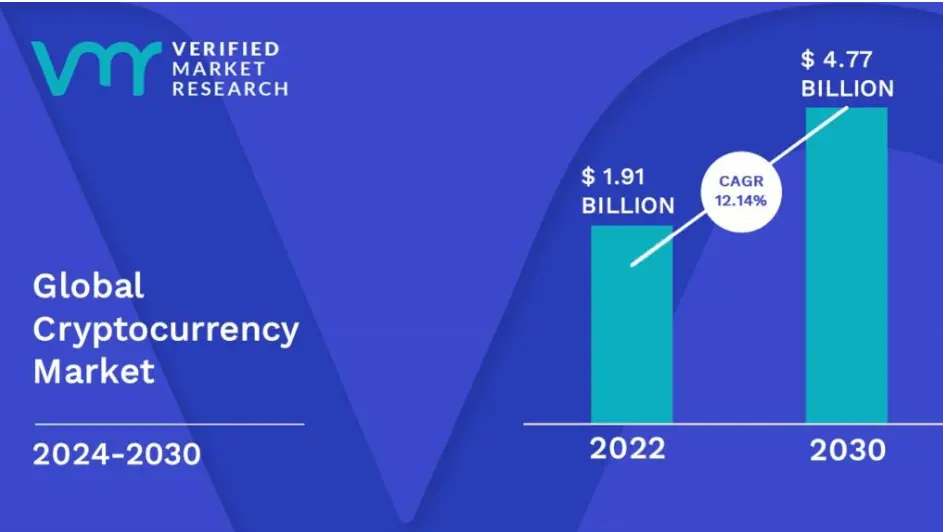
Source: VerifiedMarketResearch
Here are few stats to explore indicating why it is a good time to invest in a crypto portfolio tracker app development.
- The global cryptocurrency market was booming in March 2023, reaching a staggering $1.17 trillion in total value.
- Bitcoin, the leading cryptocurrency, experienced a surge in popularity with its user base projected to surpass 420 million by 2023. This indicates a significant increase from the already impressive global total of over 295 million cryptocurrency users.
- The rapid growth is further fueled by the emergence of new cryptocurrencies, with an estimated 33 being created each week.
- Binance, a major cryptocurrency exchange, facilitates a massive daily trading volume exceeding $14.39 billion.
- Bitcoin itself hit a record high of $69,044.77, solidifying its position as a valuable asset.
- Investment in the cryptocurrency market is on the rise, with crypto investment funds managing a substantial $59.6 billion in assets.
- The increasing popularity is reflected in the growing infrastructure, with an estimated 40,000 cryptocurrency ATMs available globally.
What Is A Crypto Portfolio Tracker App?
Crypto portfolio trackers provide a real-time snapshot of your entire crypto portfolio, consolidating the value of your various cryptocurrencies, transaction history, and overall performance into a clear and concise view. You can react to price movements quickly, identify trends, and adjust your strategy accordingly.
The functionalities of these trackers extend far beyond simply viewing account balances. Many offer advanced features designed to empower you as a crypto investor. Performance charts paint a vivid picture of how your crypto assets have fluctuated over time, allowing you to gauge their individual and collective growth.
For added convenience, certain apps boast the ability to connect directly to your crypto exchanges and wallets. This eliminates the need for manual data entry, automatically importing your transactions and ensuring your portfolio remains up-to-date on your part.
How Does A Crypto Portfolio Tracker Work?
Crypto portfolio trackers help users monitor their digital assets by gathering data from various sources. Some trackers require users to manually input transaction details like the type of crypto, purchase date, price, and fees, which can be tedious for investors with many holdings.
Alternatively, some trackers offer automatic integration with cryptocurrency exchanges and wallets. This is done by linking the tracker to the exchange’s API (application programming interface) or connecting the wallet directly.
Once the data is collected, the tracker monitors the crypto portfolio in real-time, providing valuable insights into investments. Ideally, a crypto portfolio tracker should offer manual and automatic data input for maximum flexibility. It should also provide real-time price alerts, customizable notifications, and analytics tools to help you identify trends and manage risk.
Business Benefits of Building A Crypto Portfolio Tracker App
The cryptocurrency market is booming, attracting a growing number of investors. But with this surge comes a challenge: managing multiple crypto holdings across different exchanges and wallets. This is where crypto portfolio tracker apps come in, offering a valuable service for investors and a lucrative opportunity for businesses. Let’s explore the key business benefits of building a crypto portfolio tracker app:
1. Meeting a Growing Demand
As crypto adoption rises, the need for user-friendly portfolio management tools becomes increasingly crucial. Your app can capitalize on this demand by providing a convenient platform for investors to track their holdings.
2. Enhanced User Engagement
A well-designed app can keep users engaged by offering real-time price updates, performance analysis, and market insights. This not only fosters user loyalty but also creates opportunities for in-app features like premium subscriptions or educational content.
3. Subscription Revenue Model
Consider offering a freemium model with basic features and a premium tier with advanced functionalities like automated trading tools, advanced analytics, or personalized alerts. This subscription model can generate recurring revenue for your business.
4. Data-Driven Marketing
By understanding user behavior through app data, you can tailor marketing campaigns and target specific demographics with relevant features and educational content. This data-driven approach can significantly improve marketing ROI.
5. Building Brand Authority
A well-designed and informative app can establish your brand as a trusted resource in the crypto space. This can attract new users and potentially lead to future business partnerships or integrations with other crypto platforms.
6. Integration Opportunities
Your app can integrate with various crypto exchanges and wallets, allowing users to import their holdings seamlessly. This not only enhances user experience but also opens up potential revenue streams through partnership agreements with these platforms.
7. Attracting Talent
Building a crypto portfolio tracker app positions your company at the forefront of a rapidly evolving industry. This can attract skilled developers and tech talent who are passionate about blockchain technology.
Building a crypto portfolio tracker app offers a compelling blend of business potential and the ability to serve a growing need in the crypto market. By focusing on user experience, data-driven insights, and strategic partnerships, your app can become a valuable tool for investors and a thriving business venture.
Must-Have Features In A Crypto Portfolio Tracker App
A robust crypto portfolio tracker app goes beyond simply listing your holdings. It equips you with the tools to manage your crypto assets and make informed investment decisions effectively. Here’s a breakdown of the must-have features:
1. Comprehensive Portfolio Management
Track your holdings across various exchanges and wallets in a single interface. This includes cryptocurrencies, tokens, and even NFTs (Non-Fungible Tokens) for a holistic view of your digital assets. Imagine having all your crypto holdings, from established coins like Bitcoin to the latest DeFi tokens and even unique digital art, displayed in one place. This makes it easier to understand your overall investment landscape and make informed decisions about your entire portfolio.
2. Real-time Market Data and Price Tracking
Stay on top of market fluctuations with live or near real-time price updates for your holdings. With instant updates on the value of your crypto assets, you’ll never miss a beat. This allows you to react quickly to market changes, identify potential trading opportunities, and make informed decisions about buying, selling, or holding your investments.
3. Performance Analytics and Reporting
Gain insights into your portfolio’s performance over time. Track profits, losses, ROI (Return on Investment), and analyze performance metrics like total gains, individual asset performance, and historical trends to identify areas of strength and weakness. This level of detail empowers you to make data-driven decisions and optimize your investment strategy for better returns.
4. Tax Reporting Tools
Simplify tax filing by generating reports that categorize your crypto transactions and calculate potential capital gains or losses. Tax season doesn’t have to be a headache. With automated tax reports, you can save time and ensure you’re filing your taxes accurately, avoiding any unwanted surprises from the tax authorities.
5. Risk Management Features
Assess the risk profile of your portfolio. Look for features that allow you to set up price alerts and monitor volatility to make informed decisions about buying, selling, or holding your assets. Don’t be caught off guard by sudden market shifts. Utilize volatility alerts and portfolio risk assessments to manage your exposure and make strategic investment choices.
6. Diversification Analytics
A well-diversified portfolio helps mitigate risk. Look for portfolio tracker apps that analyze your asset allocation and provide recommendations to create a more balanced portfolio. Spread your bets and avoid putting all your eggs in one basket. Portfolio tracker apps can help you analyze your asset allocation across different cryptocurrencies and asset classes, suggesting ways to diversify and achieve a more balanced investment strategy.
7. Integration with Exchanges and Wallets
Seamlessly connect your crypto exchanges and wallets to the tracker app for automatic data import and synchronization. This eliminates the need for manual data entry, reducing the risk of errors and saving you valuable time. Effortlessly keep your portfolio tracker up-to-date with automatic data import, ensuring your information is always accurate and reflects the latest state of your holdings.
APIs For Enabling Crypto Portfolio Tracking Functionality
Building a crypto portfolio tracking app requires access to various data points. Thankfully, you can leverage APIs to avoid reinventing the wheel. Here’s a breakdown of popular Crypto Portfolio Tracking APIs and their functionalities:
1. CryptoCompare API
CryptoCompare offers a comprehensive API for cryptocurrency data, encompassing a wide range of cryptocurrencies, trading pairs, and exchange information. You can integrate real-time and historical price data, volume data, and streaming functionality into your app. The API also provides access to crypto news articles, ensuring your users stay informed. To learn more about their secure API and pricing details, visit their website.
2. Blox API
The Blox API streamlines data fetching for your crypto portfolio tracking app by integrating with multiple blockchains and exchanges. This allows you to build user-friendly dashboards for managing various exchange and wallet integrations. Additionally, the API offers functionalities for reviewing past transactions, providing a complete picture of your users’ crypto activity. Contact Blox directly for more information about their API.
3. Nomics API
Focus on providing real-time market data and insights with the Nomics API. This API grants access to price, market data, and information from prominent cryptocurrency exchanges. With coverage for a wide range of cryptocurrencies and major exchanges like Binance, Gemini, and Coinbase, Nomics ensures your app stays up-to-date. The API offers real-time market cap, price, and supply data. Explore their extensive documentation to get started, and review their pricing plans to find the best fit for your project.
4. CryptFolio API
The CryptFolio API goes beyond basic price tracking, offering functionalities to synchronize trades from different wallets and exchanges. This simplifies portfolio management for your users. Additionally, the API integrates tax management functionalities specifically for crypto trading, ensuring your users can handle their crypto taxes with ease. CryptFolio also provides crypto market performance charts and allows users to set up alerts for informed investment decisions. The API supports key exchanges like Bittrex and Bitfinex, as well as popular wallets like Ledger. Notably, CryptFolio automatically picks up data for new cryptocurrencies, ensuring your app stays relevant. Check their website for pricing details.
5. Coin Stats API
Enhance your app’s visual appeal and user experience with the Coin Stats API. This API offers functionalities to extract coin prices and display historical charts, providing users valuable insights into market trends. You can also leverage the API to access market prices across supported exchanges and specific coin tickers. For a well-rounded user experience, the Coin Stats API allows the incorporation of fiat currency rates and crypto news. Explore their extensive documentation to get started, and contact them for their pricing plans.
How To Build A Crypto Portfolio Tracker App?
Building a crypto portfolio tracking app involves fetching live market data, secure user logins, and a sleek interface. Here are steps to develop your app:
1. Define Your App’s Core Features
Start by identifying the must-have functionalities for your crypto portfolio tracker. These could include adding crypto holdings manually or via exchange integration, live price updates, portfolio performance tracking (total value, profit/loss), and basic charting. Consider what features existing apps lack that yours could offer—a unique selling point is key!
2. Choose Your Development Approach
Building a full-fledged app requires programming knowledge. If you’re new to coding, consider a low-code option like building a tracker on Google Sheets with crypto price data import using Apps Script. For a native mobile app, you’ll need to choose a development language (Swift, Kotlin) and decide whether to build the backend yourself or leverage a Mobile Backend as a Service (MBaaS).
3. Design a User-Friendly Interface
Prioritize a clean and intuitive interface. Users should easily add holdings, view current prices and portfolio value, and navigate different features. Explore popular design patterns for financial apps and ensure easy readability on mobile devices. Consistency and clarity are crucial for a positive user experience.
4. Integrate Real-time Crypto Data
Cryptocurrency prices fluctuate rapidly. To offer accurate portfolio tracking, you’ll need to integrate real-time market data. Popular options include APIs from CoinMarketCap, CoinGecko, or CryptoCompare. These APIs provide access to live prices, historical data, and market capitalization for a vast number of cryptocurrencies.
5. Implement Secure User Authentication
Security is paramount when dealing with financial data. Employ robust user authentication methods like two-factor authentication or biometric logins (fingerprint, facial recognition) to safeguard user information and prevent unauthorized access. Consider secure data storage practices and encryption to protect user privacy.
6. Focus on Performance and Scalability
As your user base grows, your app should be able to handle increased traffic and data loads efficiently. Choose a development approach that allows for scalability. Regularly test your app’s performance and optimize code to ensure smooth operation and a seamless user experience.
7. Rigorous Testing and Deployment
Before launching your app, conduct thorough testing on various devices and operating systems to identify and fix any bugs or glitches. User acceptance testing with a small group can also be valuable. Once confident, deploy your app on the respective app stores (iOS App Store, Google Play Store) and consider offering a web-based version for broader accessibility.
Top Crypto Portfolio Tracker Apps In The Market Right Now
Looking to innovate in the crypto space? Check out these top portfolio tracker apps to see what users are demanding and inspire your next development project!
1. CoinStats
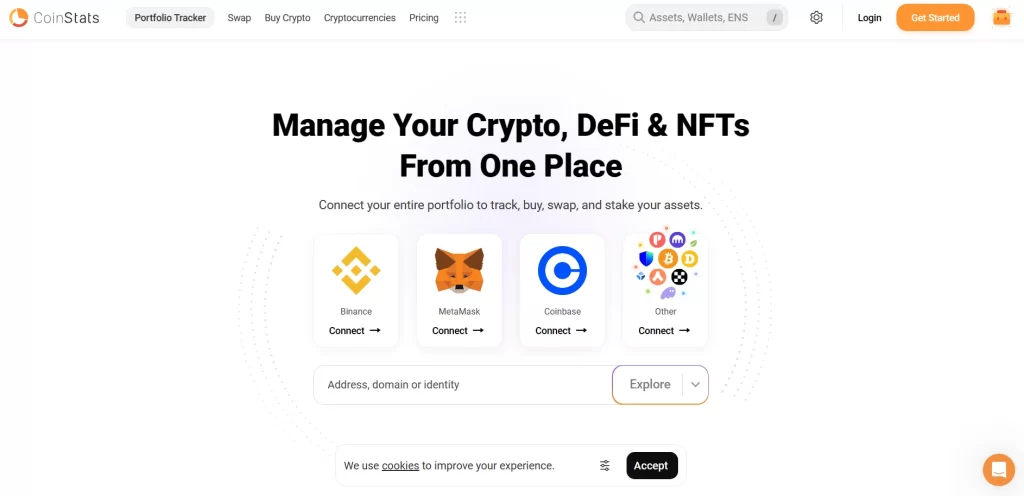
CoinStats is a dedicated crypto portfolio tracker that seamlessly integrates with over 300 exchanges, blockchains, and wallets. It provides a comprehensive view of your holdings, aiding informed investment decisions. CoinStats offers real-time price updates for over 8,000 digital assets and boasts a user-friendly, secure interface. While there’s a free plan, unlimited portfolio tracking starts at $9.99 monthly.
2. CoinMarketCap
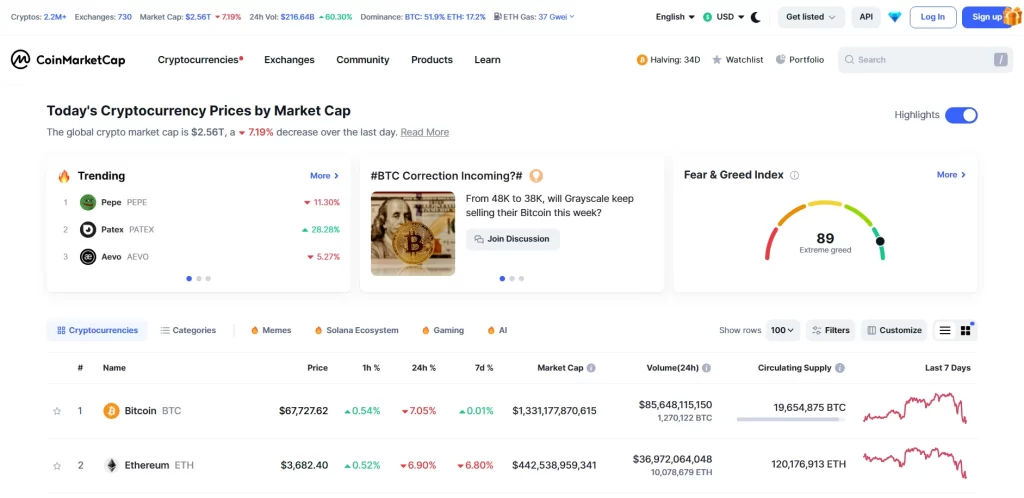
A prominent cryptocurrency data aggregator, CoinMarketCap offers a web and mobile app-based portfolio tracker. It enables the monitoring of over 2 million digital assets, with a user-friendly dashboard for tracking individual asset prices, historical performance, and portfolio allocation. CoinMarketCap is free and provides real-time price data. It supports API integration with exchanges like Binance and OKX, along with crypto wallet connections. Manual transaction input is also an option.
3. CoinGecko
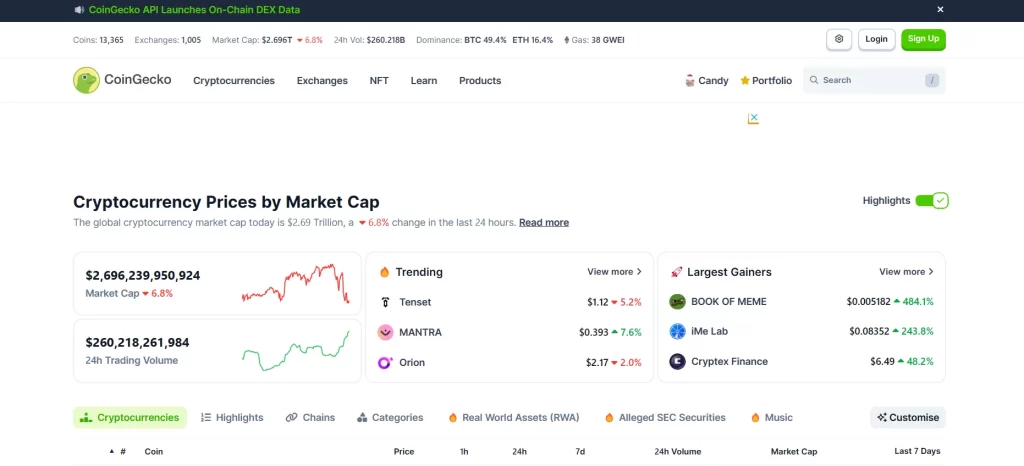
CoinGecko offers real-time tracking for over 11,500 virtual currencies with free access on mobile and desktop devices. It allows the creation of multiple portfolios to track assets across various ecosystems like DeFi and CeFi. However, CoinGecko requires manual transaction input and lacks wallet or API integration.
4. Koinly
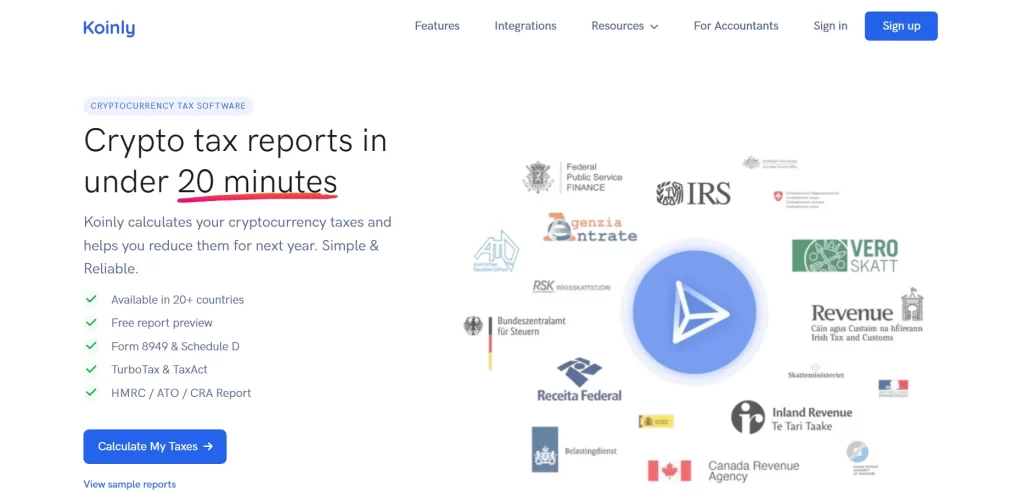
Koinly specializes in tax-compliant crypto monitoring and offers portfolio tracking tools. It consolidates crypto assets in one space for a comprehensive overview of holdings. Koinly integrates with popular exchanges like Binance and Coinbase, supporting over 80 wallets and 150 blockchains. Investors can track investments and generate free tax reports with Koinly (usage capped for free plan).
5. Kubera
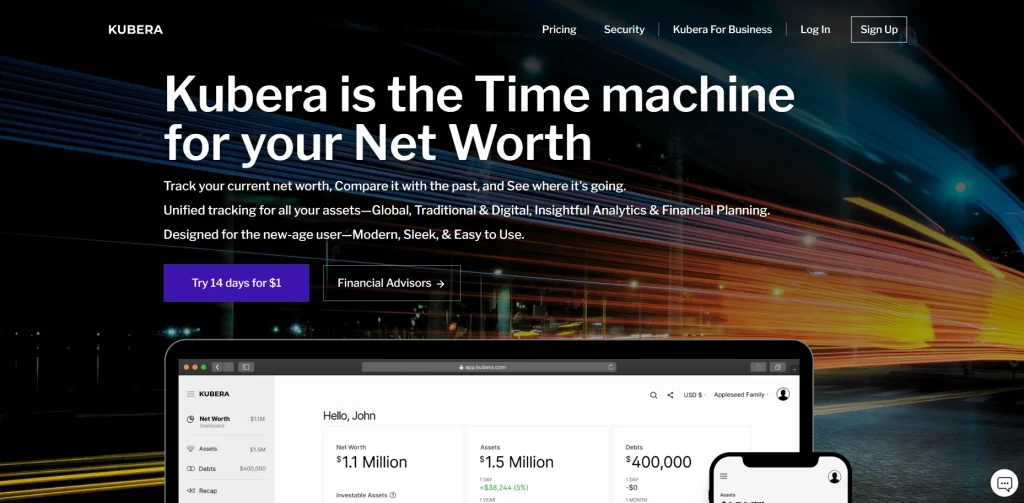
An all-encompassing wealth-tracking solution, Kubera is the first personal balance sheet software and portfolio-tracking app, according to its developers. This crypto tracker offers automatic integration with over 120 exchanges, wallets, and blockchains. Kubera tracks a wide range of assets, including cryptocurrencies, DeFi coins, commodities, and stocks. A unique feature is beneficiary management, allowing you to designate someone to access your crypto portfolio after your passing. Kubera is available on both web and mobile devices.
Team Structure For Creating A Cryptocurrency Portfolio Tracker App
To create a successful cryptocurrency portfolio tracker, you’ll need a team with diverse skill sets working together seamlessly. Here’s a breakdown of the core roles you’ll want to consider:
1. Business Analyst
This individual will act as the bridge between the business goals and the technical development. They’ll gather user requirements, analyze the competitive landscape, and define the features and functionalities of the app. In essence, the business analyst will ensure the final product meets the needs of both users and the business itself.
2. UI/UX Designer
The UI/UX designer will craft the user experience, ensuring the app is intuitive, user-friendly, and visually appealing. They’ll design the interface layouts, user flows, and overall look and feel of the app. A strong UI/UX designer will prioritize user needs by creating an interface that is not only aesthetically pleasing but also easy to navigate and understand.
3. iOS Development
The iOS developer will bring the app to life on Apple devices. They’ll be responsible for writing clean, efficient code that leverages the iOS platform’s capabilities to deliver a smooth user experience. The iOS developer should have a strong understanding of Apple’s development tools and frameworks to ensure the app integrates seamlessly with iPhones and iPads.
4. Android Development
The Android developer will be responsible for the app’s functionality on Android devices. Their expertise will ensure the app performs well across various Android devices and operating systems. An experienced Android developer will stay up-to-date with the latest advancements in the Android ecosystem to guarantee optimal performance and compatibility.
Cost Affecting Factors To Consider To Create A Cryptocurrency Portfolio Tracker App
The cost of building a crypto portfolio tracker app depends on factors such as features, security, and how you develop it. Let’s break down the key cost factors.
1. Complexity of the App
This is a major cost driver. Basic features like price tracking and portfolio valuation will be cheaper to develop than complex features like margin trading simulations or advanced charting tools.
2. Platform Choice
Building a native app for iOS and Android separately will cost more than building a cross-platform app. Consider the target audience and weigh the cost against the reach of each platform.
3. Development Team Location
Hiring developers in regions with a lower cost of living will be cheaper than those in tech hubs. This can be balanced against potential communication challenges and expertise.
4. Exchange Integration
Connecting your app to various cryptocurrency exchanges for real-time data and potentially automated trading requires additional development effort and may incur fees from the exchanges themselves.
5. Security Features
Robust security measures like multi-factor authentication and encryption are essential. Implementing these features adds to the development cost.
6. Maintenance and Updates
Keeping the app updated with the latest cryptocurrencies, security patches, and bug fixes requires ongoing development resources. Factor in these costs for the long term.
Cost-affecting factors for developing a cryptocurrency portfolio tracker app with an estimated cost range are as follows:
| Factor | Estimated Cost Range (USD) |
| Complexity of the App | Basic: $5,000 – $15,000 Intermediate (with charting): $15,000 – $30,000Advanced (with trading simulations): $30,000+ |
| Platform Choice | Native (iOS & Android): $20,000 – $50,000+ Cross-Platform: $10,000 – $30,000 |
| Development Team Location | North America/Western Europe: $50 – $150 per hourEastern Europe/Asia: $30 – $80 per hour |
| Exchange Integration | Limited Integration (Free APIs): $0 – $5,000 Extensive Integration (Paid APIs): $5,000 – $20,000+ |
| Security Features | Basic Security: $5,000 – $10,000Advanced Security: $10,000 – $20,000 |
| Maintenance and Updates | $2,000 – $10,000 per year |
Tech Stack To Consider To Create A Cryptocurrency Portfolio Tracker App
Building a crypto portfolio tracker involves both front-end and back-end development. Here’s a breakdown of the tech stack to consider for each:
1. Frontend
- UI Frameworks: Popular choices include React, React Native (for mobile apps), Vue.js, or Angular. These offer pre-built components and features for a smoother development process.
- Data Visualization Libraries: Libraries like Chart.js or D3.js can help create interactive charts and graphs to visualize portfolio performance.
2. Backend
- Programming Languages: Python (with Flask) or Javascript (with Node.js) are popular choices due to their large developer communities and extensive libraries.
- Databases: For storing user data and transaction history, consider a relational database like PostgreSQL or a NoSQL option like MongoDB.
- APIs: You’ll need an API to retrieve real-time or historical cryptocurrency prices. CoinMarketCap, CoinGecko, or CryptoCompare all offer public APIs for this purpose.
3. Additional Considerations
- Security: Cryptocurrency apps handle sensitive user data, so robust security measures are crucial. Implement secure user authentication, data encryption, and regular penetration testing.
- DevOps Tools: Continuous integration and continuous delivery (CI/CD) tools like Jenkins can automate testing and deployment processes.
- Project Management: Tools like Trello or Asana can help manage tasks, track progress, and collaborate within your development team.
Conclusion
Crypto portfolio trackers are revolutionizing how Web3 investors manage their digital assets.
The market for such a tracker is massive and growing. By offering premium features like personalized news feeds and on-chain analytics, you can transform your app into a one-stop crypto hub and build a loyal following.
But there’s an exception: security is king. Investors must trust your tracker with their financial information. This is where a blockchain development company enters into. They use safety measures and know-how to protect your app from hackers. Furthermore, their DeFi expertise might result in features that will elevate your tracker to the top of the industry.
Together, you can create a secure, feature-rich platform that takes advantage of the growing Web3 industry.
How Can We Help?
As a blockchain service provider, we understand the need for efficient crypto investment tools.
We’ll combine user-friendly features, robust security, and up-to-date data. The app will offer real-time price tracking, portfolio management, analytics, and customizable alerts.
Integration with major exchanges and blockchain networks ensures accuracy. We prioritize scalability and will continuously update the app to meet evolving market needs.
Here is a case study of a project called “EQL,” which we developed for our client. You can read it to learn about our expertise in blockchain development.
By collaborating, we can create a powerful tool for both beginner and experienced investors, promoting financial literacy in the crypto world.
FAQ
Q. Why build a crypto portfolio tracker app?
A. There’s a growing demand for tools to manage crypto investments. Your app can offer a user-friendly way to track prices, analyze performance, and stay informed about the market. This caters to both experienced traders and newcomers seeking a convenient solution.
Q. What are the key features to consider in a Crypto Portfolio Tracker?
A. Implement strong authentication and data encryption. Core features should include portfolio tracking (adding holdings, monitoring prices), price charts, market analysis tools, and watchlists for following specific coins. Integration with crypto exchanges for seamless trading is a plus.
Q. How can the Crypto Portfolio Tracker app stand out from competitors?
A. Focus on a unique selling proposition. It could be a sleek, user-friendly interface, advanced analytics with portfolio performance insights, or integration with DeFi (decentralized finance) platforms. To attract new users, consider offering educational resources or gamification elements.
Q. What are the technical challenges involved in a Crypto Portfolio Tracker?
A. Building a robust app requires expertise in mobile app development and backend infrastructure. Integrating with multiple crypto exchanges and APIs (Application Programming Interfaces) for real-time data can be complex. Prioritizing security measures and ensuring data integrity are crucial.
Q. How can businesses ensure the Crypto Portfolio Tracker app’s success?
A. Market research is key. Understand your target audience and their needs. Build a Minimum Viable Product (MVP) with core functionalities and gather user feedback for iterative improvement. Strong marketing and user acquisition strategies are essential for attracting and retaining users in a competitive landscape.










Gaurav Patil